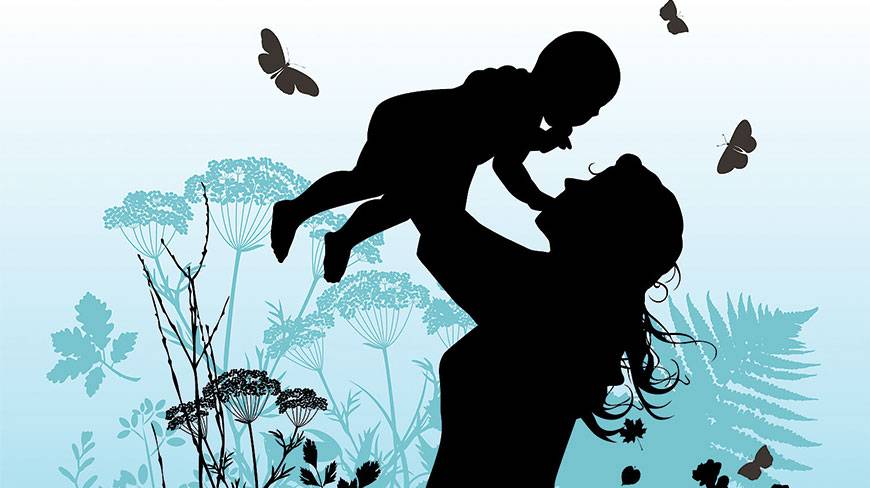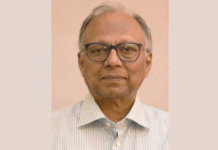Archeologist Joseph Szombathy found a female figurine while excavating near the town of Willendorf in Austria. This figurine is an important icon of prehistoric times.
The statue has enlarged breasts and a stomach, and a greatly emphasised pubic area. Seeing this resemblance with pregnant woman, and as it is carved in limestone, dyed with red ochre pigment, researchers hypothesised that this statue might have been a symbol of fertility.
The nomadic society may have used it in their rituals. The red ochre pigment covering it is thought to symbolise the menstrual blood seen as a life-giving agent. It has also been thought that the nomadic man used it as a good luck charm and carried it with him when they went hunting. The seven circles of braids on the faceless head of the statue is the source of this assumption.
It is also assumed that this figurine not only reminded them of their female mates, but its facelessness also portrayed mystical powers of a female goddess.
Many researchers and anthropologists believe that in prehistoric times, societies were matrilineal, where the authority of family and tribe was in the hands of women. Before modern testing, the enlarged stomach of a pregnant woman was the only way of knowing who was responsible for giving birth.
Motherhood, thus, was seen as a symbol of power, honour, and something holy. Many feminist theorists believe men feared women’s ability to give birth. It was a mystical power to them.
Even after their role in giving birth was discovered, they felt the need to institutionalise violence in order to declare their own supremacy. Researchers believe that women’s ability to give birth reminded men of their own life, and eventual end.
Theorist Mary O’Brien believes that it is men’s psychological need to compensate for their inability to bear children which made them construct institution of dominance. Family is one such institution of dominance.
Family is the founding unit of society and state. Not only does it maintain legitimate heir and protect private property, but also it teaches humans the lessons of patriarchal state. No matter how many wives there are, the father remains one, according to the laws of patriarchy.
The supreme authority a father has over every member and every object goes with monotheism. Through learning to fear the father, we learn to fear personality cults, authority, and we learn to submit ourselves in front of authoritarian figures even if it is exploitative and repressive. Children learn from family that women are to submit and men are to dominate, and if anyone disobeys they can be punished with violence.
There is a void in the concept of a modern day happy family — and motherhood too. Though motherhood once was respected and came with authority and power for women, patriarchy has successfully learned to bend motherhood for its own purpose.
Throughout a girl’s life, she is reminded that she is to become a mother one day, and only because of this, she is valuable. As if she lacks worth on her own, she lacks value as a full grown person.
This philosophy of motherhood and family curtails the value of everything she does. Unless she is a mother, unless she is a married woman with a family, everything is futile, no matter how many glorious achievements she has. The restrictive nature of motherhood does not stop only at the individual level. So deep-seated is this belief of motherhood, that I believe it has become the underlying philosophy legitimising unequal pay and exploitative working conditions.The very moment we use the word mother, we imagine a woman who does not have something as dirty as sexuality.
A mother is someone who is pure, who is ready to accept the torturous monotony of child-bearing and rearing, and repetitive, back-breaking housework. She is someone meek, gentle, and kind enough to bear with every kind of exploitation in the name of motherly love, even outside the family.
There is a popular saying in Bangla: “Nari mayer jaat,” which means women are in the end mothers. The underlying belief is that she is someone docile who will not defy authority, no matter how repressive it is.
It is not a matter of surprise that the working sector, which has the least pay and worst working conditions, tend to have the highest number of female workers. It is a matter of utter shock that a mother would kill her own children, but no one cares to explore the exploitative nature of child-rearing.
Motherhood takes more from women than it gives. The honour of motherhood does not make her equal to men. It does not give her equal rights to property, it does not give her equal pay, equal opportunity to work with men, and be recognised as an equal citizen in the eyes of the law.
It curtails her mobility, takes away crucial time from the path of developing her potential to the fullest sense. It alienates her from the rest of the world, keeping her confined within the four walls of a home along with the children. She is alienated from other women who experience the same kind of exploitation she does.
In most cases, motherhood works as an impediment to organising against institutionalised violence and exploitation against women. Only a few days ago, a mother in Dhaka city threw away her own child fearing social stigma. The child was born outside wedlock as a result of rape. One of the newspapers reported that she was in trauma.
It is also indeed one kind of motherhood. If motherhood is the highest form of women’s achievement as patriarchal society says, then why not embrace that motherhood which comes through rape?
Are we ready to accept the motherhood of the woman who killed her own children? There are cracks in the mask of docile, domesticated motherhood. Are we ready to accept what is being unveiled?
Source: Dhaka Tribune










